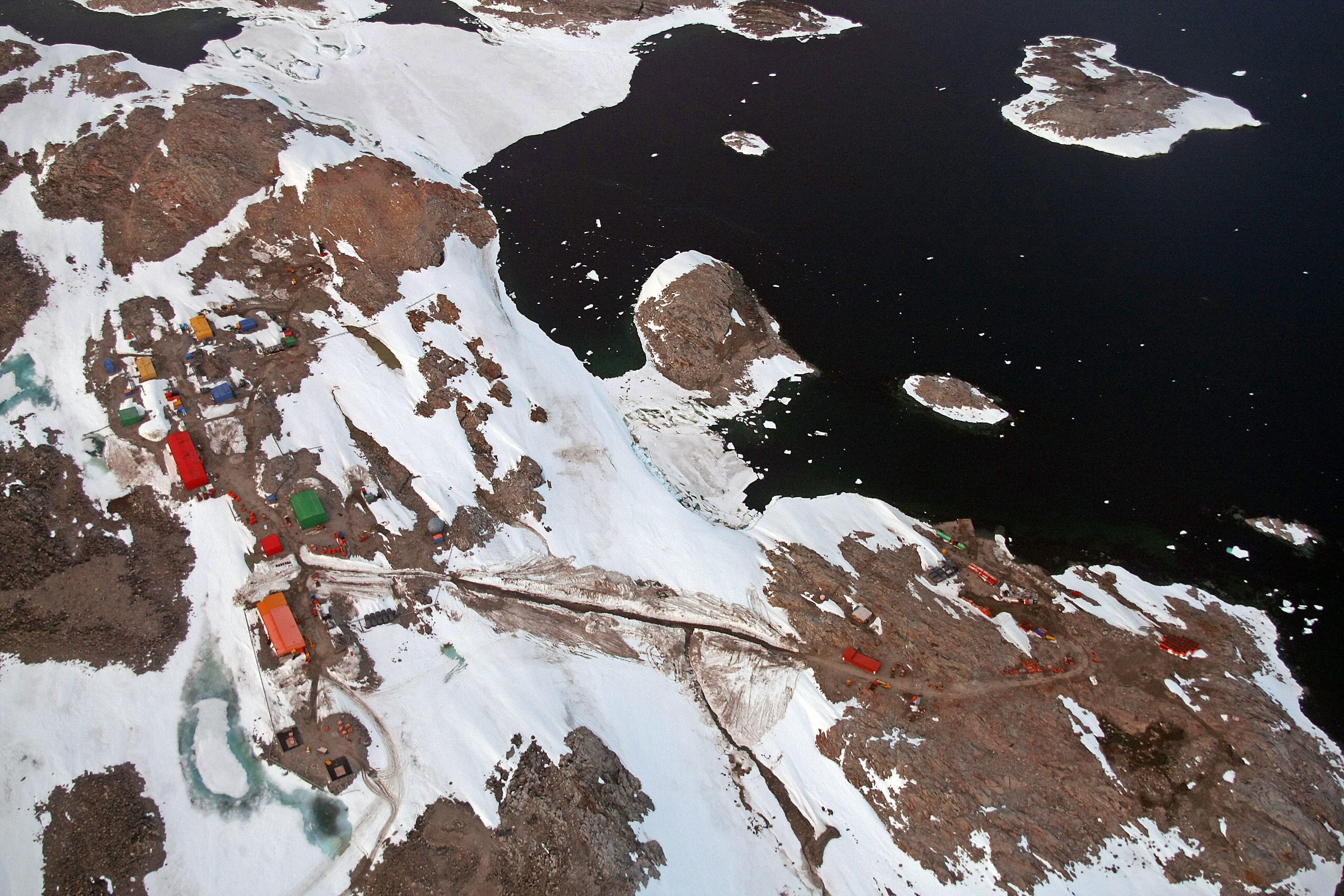Antarctic sea ice hits ‘record-smashing’ new winter low, data shows
‘There is some concern that this may be the beginning of a long-term trend of decline for Antarctic sea ice’

Sea ice encircling Antarctica has reached unprecedented low levels this winter, a preliminary analysis of US satellite data shows in yet another dubious record broken this year in the South Pole.
As the southern hemisphere transitions into spring, Antarctic sea ice reached only a maximum size of 16.96 million sq km (6.55 million sq miles) by 10 September, Nasa and the National Snow and Ice Data Center (NSIDC) said on Monday.
That is the lowest winter maximum since satellite records began in 1979, the NSIDC said, and about 1 million sq km less ice than the previous winter record set in 1986.
This comes after the summer Antarctic sea ice extent also hit a record low in February this year, breaking the previous mark set in 2022.
Researchers warned the shift will not only have dire consequences for animals like penguins, who breed and rear their young on the sea ice, but also worsen the climate crisis by reducing how much sunlight is reflected by white ice back into space.
“It’s not just a record-breaking year, it’s an extreme record-breaking year,” said NSIDC senior scientist Walt Meier.
Mr Meier said the growth in sea ice appeared “low around nearly the whole continent as opposed to any one region”.
Antarctica’s sea ice reaches its maximum extent every September, when winter ends and spring begins in the southern hemisphere. It later melts to its lowest point in February or March as summer draws to a close.
The seasonal changes in the southern pole were mostly stable until 2016, when a new record summer low was broken.
Since then several records have been broken, especially in last two years. This year has marked both the lowest summer minimum and the lowest winter minimum record.
NSIDC in a statement said the figures were preliminary, with a full analysis to be released next month. The agency cautioned that “changing winds or late-season growth could still increase the Antarctic ice extent”.
It is not yet clear what role record global temperatures this year have played in the Antarctic’s unprecedented ice levels, but the shift in recent years has scientists concerned that the climate crisis may finally be presenting itself in Antarctic sea ice.
“There is some concern that this may be the beginning of a long-term trend of decline for Antarctic sea ice, since oceans are warming globally, and warm water mixing in the Southern Ocean polar layer could continue,” the centre said in an update.
While Mr Meier cautioned it is too soon to say, an academic article published earlier this month in the journal Communications Earth and Environment pointed to climate change as a potential factor.
The study found warming ocean temperatures, driven mainly by human-caused greenhouse gas emissions, contributed to the lower sea ice levels seen since 2016.
“The key message here is that to protect these frozen parts of the world that are really important for a whole number of reasons,” said Ariaan Purich, a sea ice researcher at Australia’s Monash University who co-authored the study, “we really need to reduce our greenhouse gas emissions”.
Apart from Antarctica, the Arctic has also been hit hard by the climate crisis over the last decade. Sea ice there is rapidly deteriorating as the northern region warms four times faster than the global average.
This summer in the northern hemisphere, starting from June to August, was the hottest on record and in over 120,000 years, according to the World Meteorological Organisation.
The entire season has been marked by extreme heatwaves, wildfires and floods in Asia, Europe and North America. And with seasons now changing, South America and Australia are experiencing record high temperatures already after a warmer than usual winter.
Various scientific assessments have shown man-made carbon pollution – a result of burning fossil fuel like coal gas and oil – is responsible for these extreme temperatures and disasters.
Additional reporting by agencies
Subscribe to Independent Premium to bookmark this article
Want to bookmark your favourite articles and stories to read or reference later? Start your Independent Premium subscription today.

Join our commenting forum
Join thought-provoking conversations, follow other Independent readers and see their replies